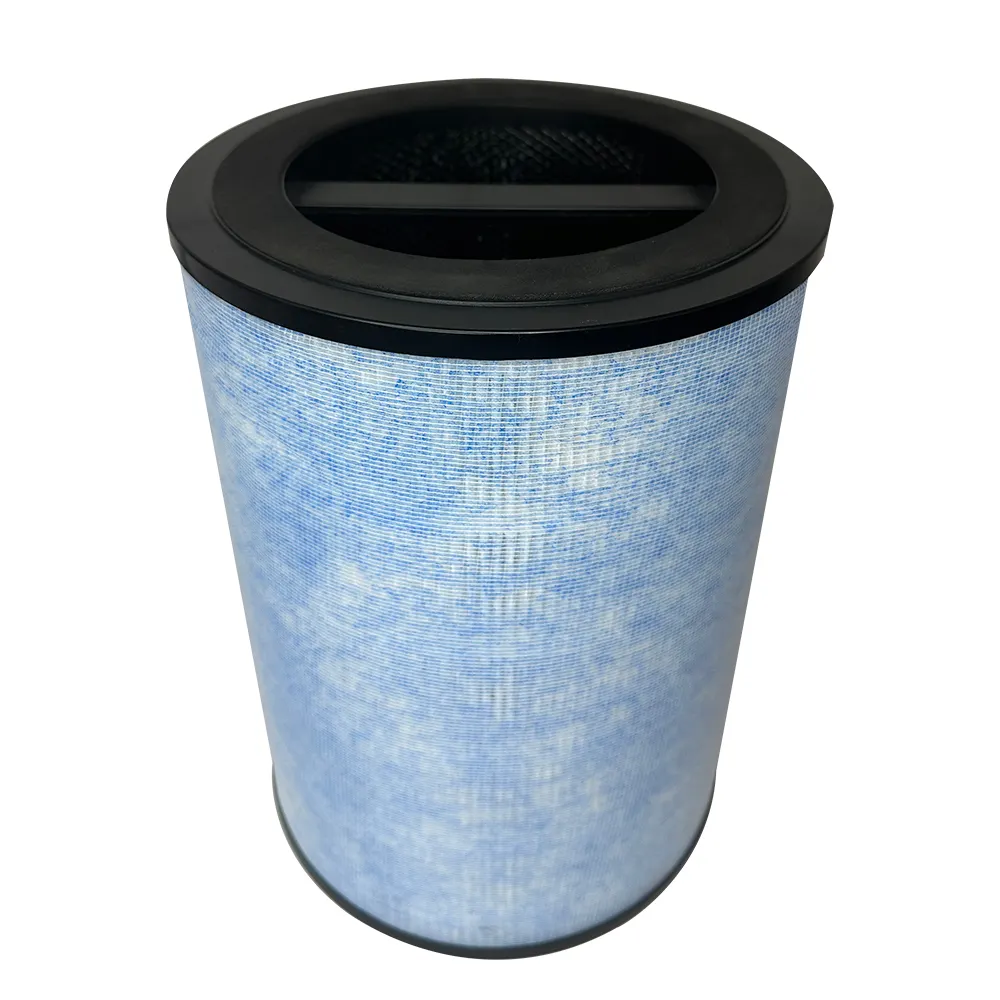Understanding the Critical Role of Air Purifier Maintenance
Clean indoor air has become increasingly important for our health and wellbeing, making air purifiers an essential household appliance. At the heart of every air purifier lies its filter - the component responsible for trapping dust, allergens, and other airborne particles. However, many homeowners remain uncertain about the proper timing for air purifier filter replacement, leading to reduced efficiency and compromised air quality.
Your air purifier works tirelessly to maintain clean indoor air, but over time, its filter becomes loaded with captured particles. Understanding when and how to replace your filter isn't just about maintaining the device; it's about ensuring your home's air remains consistently clean and healthy. Let's explore the comprehensive guide to air purifier filter replacement and maintenance to help you maximize your device's performance.
Key Factors Affecting Filter Replacement Frequency
Environmental Conditions and Air Quality
The environment in which your air purifier operates plays a crucial role in determining how often you need to replace its filter. Homes in urban areas or regions with high pollution levels typically require more frequent air purifier filter replacement. Similarly, if you live near construction sites, busy roads, or in areas prone to wildfires, your filter may become saturated more quickly.
Seasonal changes also impact filter lifespan. During pollen season or in areas with high humidity levels, filters may need more frequent replacement due to increased particle load and potential mold growth. Indoor factors such as pet dander, smoking, or frequent cooking can also accelerate filter wear.
Usage Patterns and Device Settings
How you use your air purifier directly affects the filter's lifespan. Running your device at higher speeds or for longer periods will naturally lead to more rapid filter saturation. While this means cleaner air, it also means more frequent air purifier filter replacement needs.
The size of your space compared to the purifier's capacity also matters. If your device is operating in a room larger than its recommended coverage area, it may need to work harder, potentially requiring more frequent filter changes to maintain efficiency.

Standard Replacement Guidelines by Filter Type
HEPA Filter Maintenance
High-Efficiency Particulate Air (HEPA) filters are the gold standard in air purification. Generally, these filters require replacement every 6-12 months, depending on usage and environmental conditions. However, in homes with heavy air pollution or multiple pets, air purifier filter replacement might be necessary every 4-6 months.
True HEPA filters cannot be washed or reused effectively. Attempting to clean them can damage the delicate fiber structure that makes them so effective at capturing microscopic particles. When you notice a significant decrease in air flow or an increase in operating noise, it's likely time for a replacement.
Carbon Filter Considerations
Activated carbon filters, designed to absorb odors and gases, typically need replacement every 3-6 months. These filters become saturated more quickly than HEPA filters, especially in environments with strong odors or chemical pollutants. Once saturated, carbon filters can no longer effectively absorb new contaminants.
Some high-end purifiers combine HEPA and carbon filtration in a single unit. In these cases, follow the manufacturer's guidelines for air purifier filter replacement, as the combined filter life may differ from individual component recommendations.
Signs Your Filter Needs Immediate Replacement
Visual and Performance Indicators
Several clear signs indicate the need for immediate air purifier filter replacement. A visibly dirty or discolored filter is the most obvious indicator. You might notice a gray, brown, or even black coloration on what was originally a white or light-colored filter. Some filters may also develop visible dust accumulation or dark spots.
Performance-related signs include reduced airflow from the purifier, increased operating noise, or the unit working harder than usual to maintain the same level of air cleaning. If your purifier seems less effective at removing odors or you notice more dust settling on surfaces despite regular operation, these are strong indicators that filter replacement is overdue.
Health and Comfort Signals
Pay attention to how you feel in your indoor environment. An increase in allergy symptoms, more frequent sneezing, or unexplained respiratory discomfort could signal that your air purifier filter isn't performing optimally. Some users report headaches or increased sensitivity to odors when their filters need replacement.
If you notice a musty smell coming from your purifier, this could indicate mold growth on an oversaturated filter, requiring immediate air purifier filter replacement to prevent potential health issues.
Maximizing Filter Life and Efficiency
Preventive Maintenance Practices
Regular maintenance can help extend your filter's life and maintain optimal performance. Consider running your air purifier at lower speeds when air quality is good, and increase the speed only when needed. This approach can help balance effective air cleaning with filter longevity.
Keep your home clean through regular vacuuming and dusting to reduce the particle load on your air purifier. Additionally, changing your HVAC system's filter regularly can help reduce the overall indoor air pollution your air purifier needs to handle.
Strategic Placement and Operation
Where you place your air purifier can significantly impact filter life. Avoid placing the unit in areas with direct exposure to cooking fumes, smoke, or excessive dust. Ensure adequate airflow around the device and consider using multiple purifiers in different rooms rather than overtaxing a single unit.
Some modern air purifiers include smart sensors and automated settings that adjust operation based on air quality. While convenient, regularly check these systems to ensure they're operating effectively and not unnecessarily straining your filter.
Frequently Asked Questions
Can I wash and reuse my air purifier filter instead of replacing it?
Most air purifier filters, especially HEPA filters, are not designed to be washed or reused. Washing can damage the filter's delicate structure and reduce its effectiveness. Some pre-filters can be cleaned, but the main filter should always be replaced according to manufacturer guidelines.
Why does my filter need replacement sooner than the manufacturer's timeline?
Several factors can accelerate filter wear, including high pollution levels, pet presence, smoking, frequent cooking, or operating the purifier in a space larger than recommended. Environmental conditions and usage patterns significantly impact filter lifespan.
How can I tell if my filter needs replacement if my purifier doesn't have an indicator?
Look for signs such as visible dirt accumulation, reduced airflow, increased operating noise, or decreased effectiveness in removing odors and particles. You can also track the installation date and follow general replacement guidelines based on your usage patterns and environment.
Is it worth investing in more expensive filters?
Higher-quality filters often offer better filtration efficiency and may last longer than cheaper alternatives. While the initial cost is higher, premium filters can provide better air quality and might require less frequent replacement, potentially offering better value in the long run.

